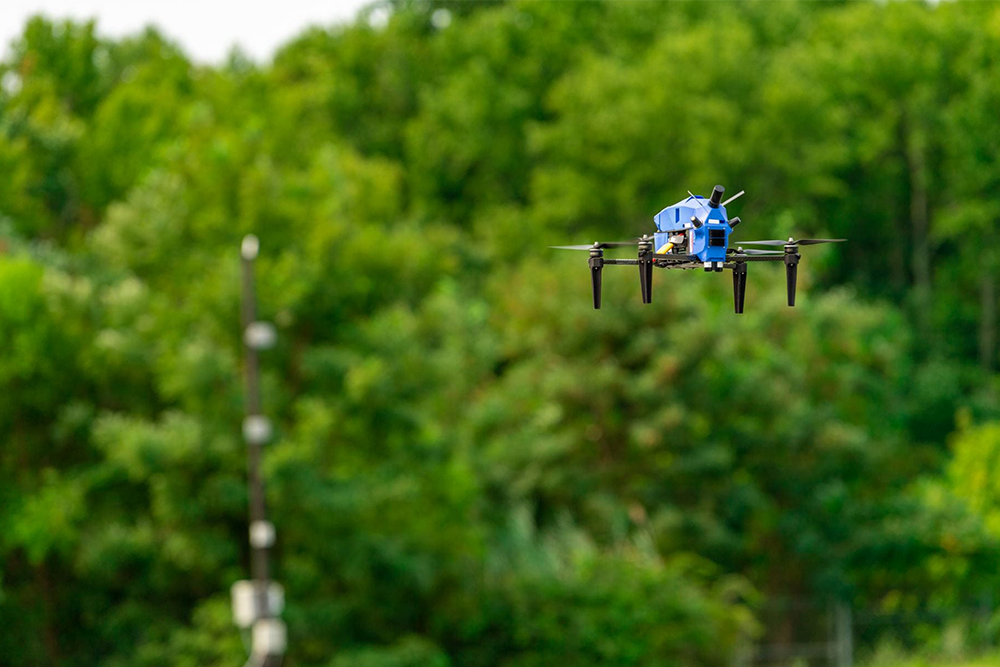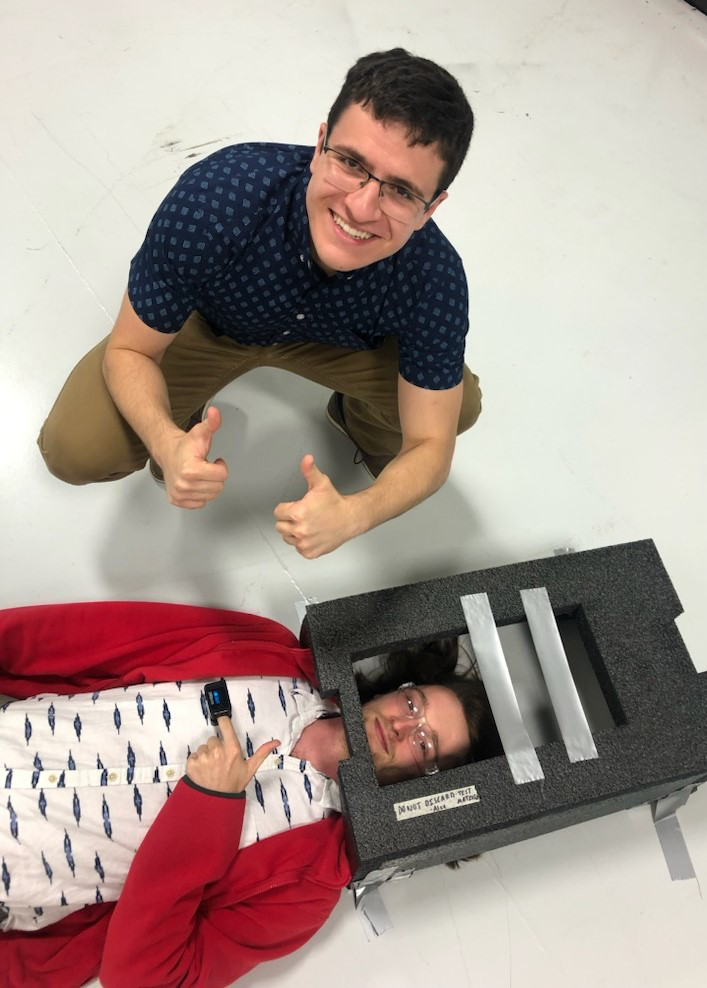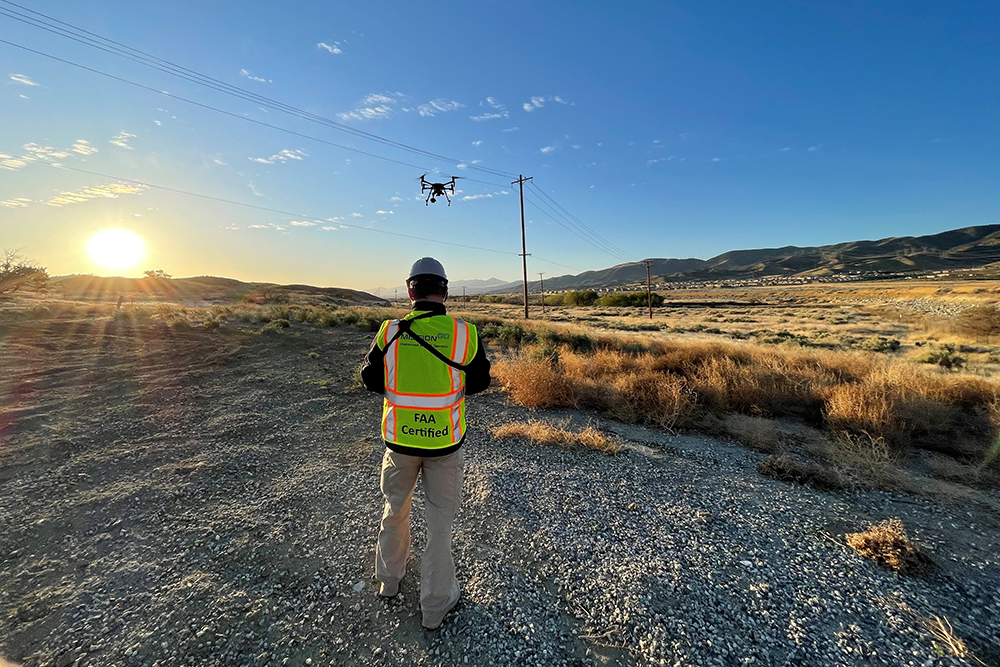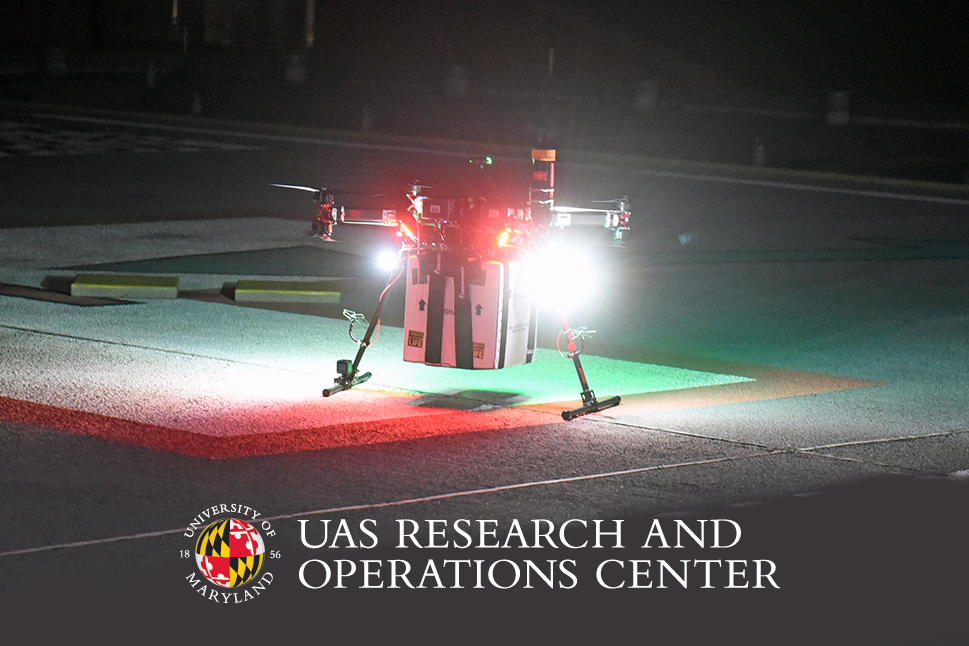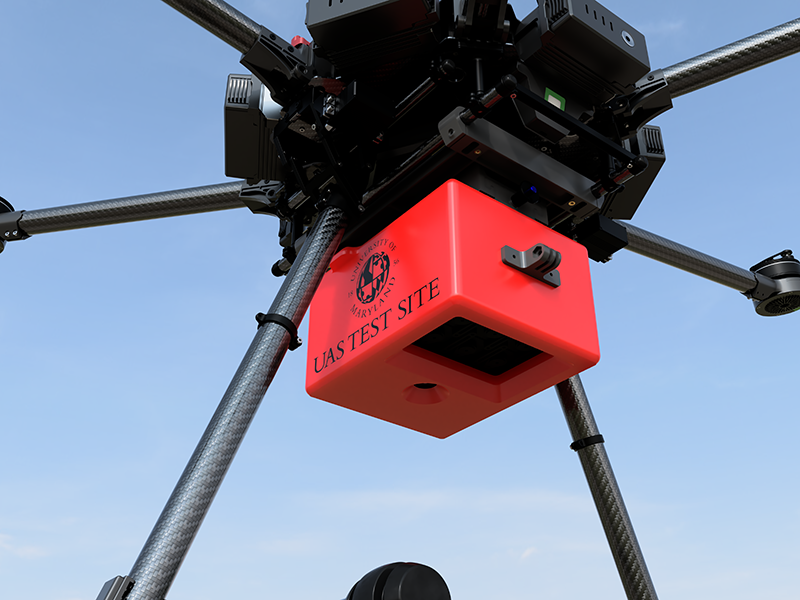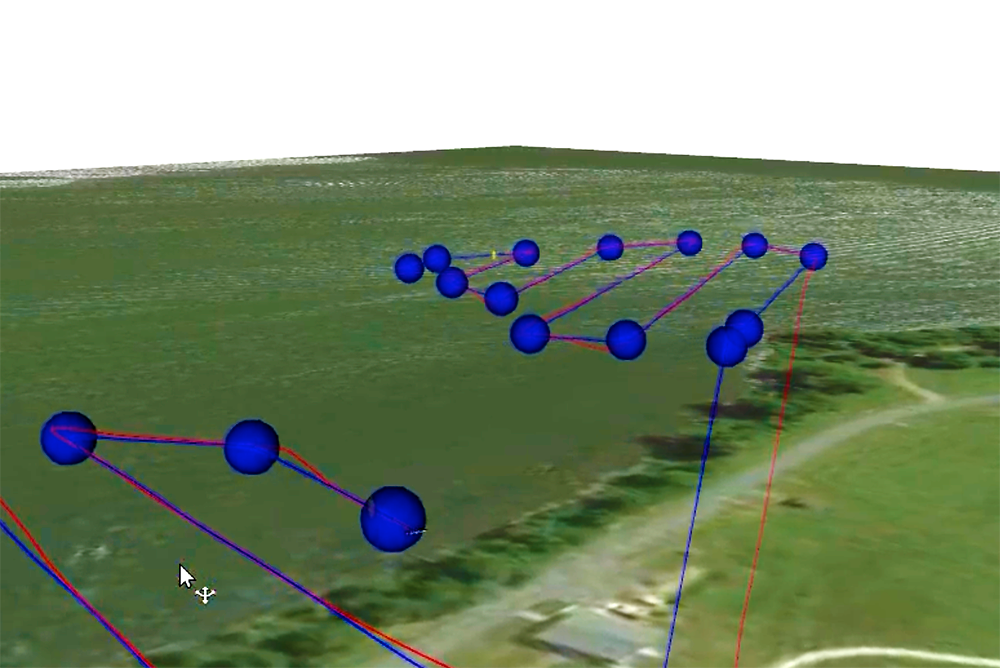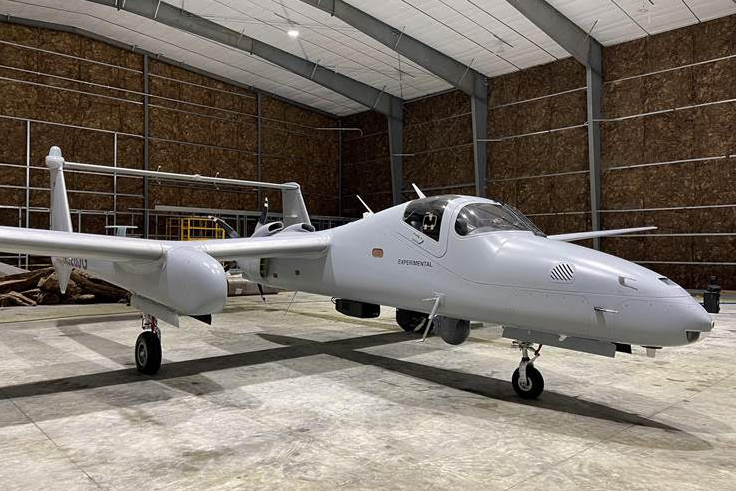News Story
Navy Demos Wide Range Of VTOL Systems For Future Operations
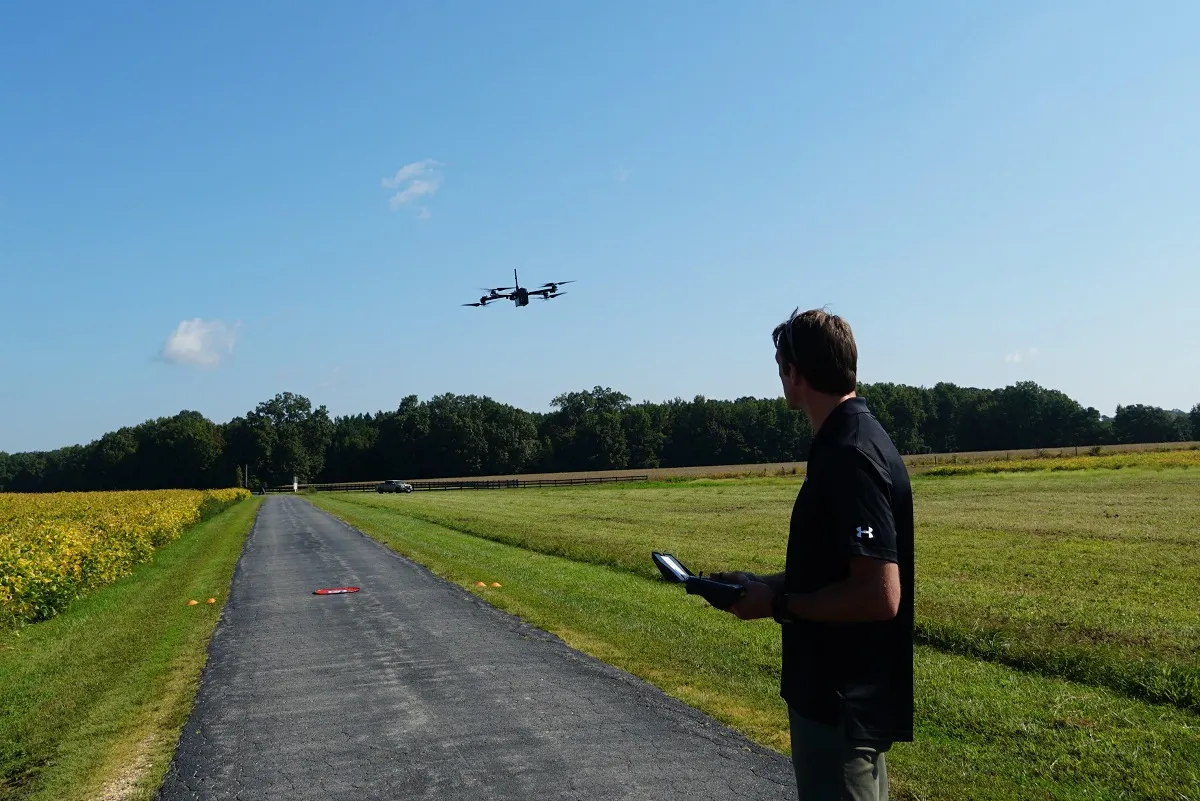
A vendor demonstrates the vertical takeoff and landing capability of a small unmanned aircraft system during a PMA-263 sponsored technical assessment Sept. 20 in California, Md. (U.S. Navy photo)
The Navy and Marine Corps Small Tactical Unmanned Aircraft Systems (PMA-263) program team put Vertical Takeoff and Landing (VTOL) systems through their paces during a two-week technical demonstration in mid-September.
More than a dozen vendors attended the event to help inform the Navy Expeditionary Warfare community of the functions and capabilities available on the commercial market. The VTOL systems represented a wide range of configurations including outdoor, indoor, hybrid VTOL/fixed wing, and tethered flight capability.
In partnership with the University of Maryland (UMD) UAS Test Site (now the UMD UAS Research and Operations Center), PMA-263’s Family of Small UAS (FoSUAS) team evaluated each system against a standard test card to determine its suitability for expeditionary combat support. In addition to basic measurements like length, height, weight, and pack-up size, performance data was collected for ease of operation, range, endurance, audibility, electro-optical and infrared imagery quality, and other unique capabilities of each system.
“The goal was to understand what the state of the market is today,” said Col Victor Argobright, PMA-263 program manager. “We want to show off what is available right now for future procurements to our Navy Expeditionary community.”
In partnership with the University of Maryland (UMD) UAS Test Site (now the UMD UAS Research and Operations Center), PMA-263’s Family of Small UAS (FoSUAS) team evaluated each system against a standard test card to determine its suitability for expeditionary combat support. In addition to basic measurements like length, height, weight, and pack-up size, performance data was collected for ease of operation, range, endurance, audibility, electro-optical and infrared imagery quality, and other unique capabilities of each system.
Participants representing the Naval Special Warfare, Navy Explosive Ordnance Disposal, and Naval Construction Force communities and their Joint Service counterparts were given the opportunity to engage directly with the participating vendors and to observe the flight demonstrations. Each participant was also asked provide their feedback on the potential of each system to fulfill their unique mission requirements.
“Flight demonstration events like this are a critical market research function for the PMA and help us to validate performance data reported by vendors,” said Lt. Cmdr. Ben Whatley, PMA-263 FoSUAS military lead. “We want to put these systems through their paces while also providing a venue for end-users to learn about existing and emerging SUAS technology. Moreover, events where operators from the supported Navy communities come together to collaborate and exchange information about their unique SUAS program needs provide added value to the PMA by ensuring unity of vision and a corresponding unity of acquisition effort.”
“Unmanned systems technology is advancing at an incredible pace,” Argobright said. “To ensure that our Navy and Marine Corps teams are able to adapt to and outmatch the capability advancements of our adversaries, it is imperative that we leverage rapid acquisition solutions in order to put relevant technology in the hands of the warfighter faster.”
PMA-263 will use the University of Maryland UROC's assessment data and observer feedback from the event to inform the program’s priorities for follow-on engineering assessments, potential for operational testing, and inclusion of new platforms within the FoSUAS programs of record.
The PMA-263 FoSUAS integrated product team currently supports Group 1 and 2 SUAS including the PD-100 Black Hornet 3, Skydio X2D, SkyRaider R80D, and RQ-20B Puma.
Published October 25, 2022
